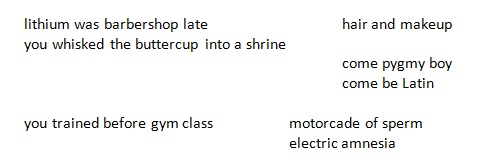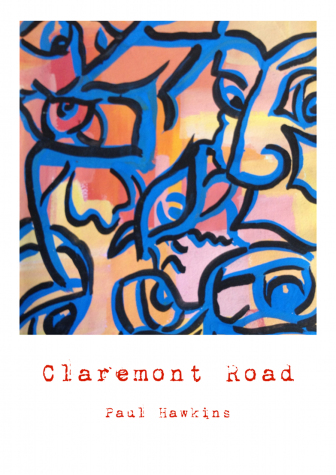‘The Son of a Shoemaker’ by Linda Black
-Reviewed by Billy Mills–
Of all the formal devices embraced by late 19th and early 20th century French poetic innovators, the prose poem is the one that still divides readerly opinion most. While vers libre has been slowly accepted by most readers of contemporary poetry, there remains a substantial body of opinion that equates poetry with verse, however free, and for this audience the whole idea of prose poetry is an oxymoron. Perhaps this is why Robert Vas Dias, in the blurb for Linda Black’s prose-poem sequence The Son of a Shoemaker, describes it as ‘still, comparatively, an experimental form’.
This raises an interesting question; what makes a prose poem a poem? The simple answer is, I think, the disruption of our expectations; prose poems simply fail to deliver the kind of linearity that we generally expect of conventional prose texts. On one level, these thwarted expectations will revolve around narrative, plot and characterisation. But the best prose poems will take it further and play with the syntagmatic and paradigmatic structures of the sentences that constitute them.
Black has already published two full-length prose poem collections with Shearsman, so the form is not new to her. The sequence that makes up this book works on both levels of disruption. Collaged from Constance Buel Burnett’s somewhat colourful biography of Hans Christian Andersen, The Son of a Shoemaker is a book deriving from a fictional account of maker of fictions. In a further metabiographical layer, Danny Kaye, who played Andersen in an entirely fictional biopic, shares the dedication with Andersen and ‘my wonderful Uncle Cyril’; it is clear that Black does not intend any kind of fact-based narrative. The dedication might lead you to expect an autobiographical strand to the book. This expectation is not so much dashed as simply ignored. And while titles like ‘She had grown used to watching his mouth’ threaten anecdote, that threat is happily averted.
The disruption of linguistic linearity inheres, to some degree at least, in the collaging technique employed, a technique that produces effects reminiscent of Burroughs/Gysin cut-ups. On the whole, Black’s effects are paradigmatic; her syntax flows smoothly enough but takes us to unexpected places. The result can be playfully deft:
Great raw-bone hands cut with magic. Fragile lace.
Paper-thin thighs. Mannerisms misfit and dilapidated.
and:
Siboni tapped Hans’ thin chest making the room ring. It
was his big bone structure. (He needed no make-up to
play the part of a troll.)
Or mildly surreal:
A piece of glass no bigger than a tile inserted itself in a
Morsel of sky.
and again:
When the water gates were closed Hans could catch his hands.
When the gates reopened the flood piled against his
heels.
There is always the danger that this kind of disjunction can become a bit bathetic, the destination a touch predictable even:
In the middle of a pirouette he made a list.
However, for the most part these poems are interestingly constructed and thoughtful in the disposition of their language. Ordinary words are placed in unordinary arrangements that made me think about them anew as I read, and this is no small thing.
Black is also a visual artist and the texts are accompanied by a number of her highly competent pen-and-ink drawings. When a writer decides to marry text and visuals, the question I always find myself asking is ‘do the visuals expand on the text or merely illustrate it?’ Black’s drawings are illustrative, taking their titles from phrases in the text facing them and representing those phrases in what is, for me at least, an overly-literal manner which detracts from the more elusive effects of the poems themselves. Nevertheless, this is an interesting and rewarding set of poems from a poet whose work was new to me. I’ll be looking to read more of that work and suggest you do, too.
The Son of a Shoemaker will be launched at the Poetry Café on 20th March accompanied by an exhibition of Linda Black’s artwork.






Pingback: Announcement: Review on Sabotage | Elliptical Movements
Pingback: The Son of a Shoemaker review and exhibition |